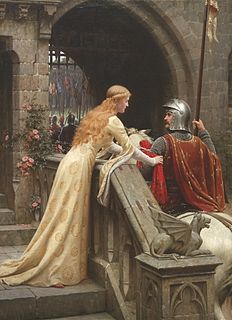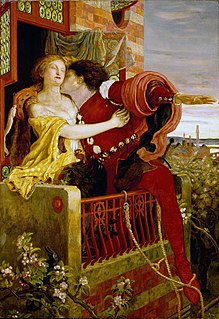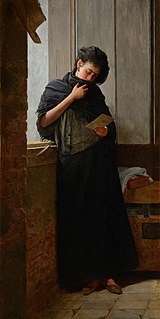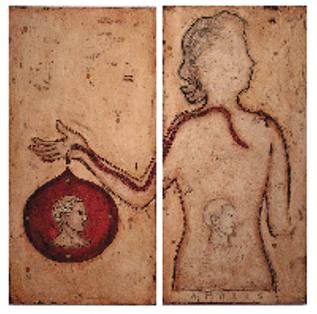 W
WAffection or fondness is a "disposition or state of mind or body" that is often associated with a feeling or type of love. It has given rise to a number of branches of philosophy and psychology concerning emotion, disease, influence, and state of being. "Affection" is popularly used to denote a feeling or type of love, amounting to more than goodwill or friendship. Writers on ethics generally use the word to refer to distinct states of feeling, both lasting and spasmodic. Some contrast it with passion as being free from the distinctively sensual element.
 W
WAll About Love: New Visions is a book by bell hooks published in 2000 that discusses aspects of love in modern society. hooks combines personal anecdotes as well as psychological and philosophical ideas to develop and strengthen her argument. She focuses on romantic love and believes that in American culture men have been socialized to mistrust the value and power of love while women have been socialized to be loving in most situations – even when their need to receive love goes unmet.
 W
WAttachment in children is "a biological instinct in which proximity to an attachment figure is sought when the child senses or perceives threat or discomfort. Attachment behaviour anticipates a response by the attachment figure which will remove threat or discomfort". Attachment also describes the function of availability, which is the degree to which the authoritative figure is responsive to the child's needs and shares communication with them. Childhood attachment can define characteristics that will shape the child's sense of self, their forms of emotion-regulation, and how they carry out relationships with others. Attachment is found in all mammals to some degree, especially primates.
 W
WBroken heart is a metaphor for the intense emotional stress or pain one feels at experiencing great and deep longing. The concept is cross-cultural, often cited with reference to unreciprocated or lost love.
 W
WIn Christian theology, Charity is considered one of the seven virtues and is understood by Thomas Aquinas as "the friendship of man for God", which "unites us to God". He holds it as "the most excellent of the virtues". Further, Aquinas holds that "the habit of charity extends not only to the love of God, but also to the love of our neighbor".
 W
WThe notion of commercialization of love, that has not to be confused with prostitution, involves the definitions of romantic love and consumerism.
 W
WCourtly love was a medieval European literary conception of love that emphasized nobility and chivalry. Medieval literature is filled with examples of knights setting out on adventures and performing various deeds or services for ladies because of their "courtly love". This kind of love is originally a literary fiction created for the entertainment of the nobility, but as time passed, these ideas about love changed and attracted a larger audience. In the high Middle Ages, a "game of love" developed around these ideas as a set of social practices. "Loving nobly" was considered to be an enriching and improving practice.
 W
WA declaration of love, also known as a confession of love, is a form of expressing one's love for someone or something. It can be presented in various forms, such as love letters, speeches, or love songs. A love declaration is more often than not explicit and straightforward.
 W
WDeus caritas est, subtitled De Christiano Amore, is a 2005 encyclical, the first written by Pope Benedict XVI, in large part derived from writings by his late predecessor, Pope John Paul II. Its subject is love, as seen from a Christian perspective, and God's place within all love. Charity is one of the three theological virtues; and the other two were treated in two successive encyclicals, one signed by Benedict and one written substantially by him but signed by his successor Pope Francis . This text begins with a reflection on the forms of love known in Greek philosophy—eros, agape, philia (friendship)—and their relationship with the teachings of Jesus.
 W
WSaint Dwynwen, sometimes known as Dwyn or Donwen, is the Welsh patron saint of lovers. She is celebrated throughout Wales on 25 January.
 W
WEcstasy is a subjective experience of total involvement of the subject, with an object of their awareness. In classical Greek literature it refers to removal of the mind or body "from its normal place of function."
 W
WEros is a concept in ancient Greek philosophy referring to sensual or passionate love, from which the term erotic is derived. Eros has also been used in philosophy and psychology in a much wider sense, almost as an equivalent to "life energy". Protestant author C. S. Lewis posits it as one of the four ancient Greek words for love in Christianity, alongside storge, philia, and agape.
 W
WErotomania, also known as de Clérambault’s Syndrome, named after French psychiatrist Gaëtan Gatian de Clérambault, is listed in the DSM-5 as a subtype of a delusional disorder. It is a relatively uncommon paranoid condition that is characterized by an individual's delusions of another person being infatuated with them. This disorder is most often seen in female patients who are shy, dependent and sexually inexperienced. The object of the delusion is typically a male who is unattainable due to high social or financial status, marriage or disinterest. The object of obsession may also be imaginary, deceased or someone the patient has never met. Delusions of reference are common, as the erotomanic individual often perceives that they are being sent messages from the secret admirer through innocuous events such as seeing license plates from specific states, but has no research development proof. Commonly, the onset of erotomania is sudden, and the course is chronic.
 W
WFalling in love is the development of strong feelings of attachment and love, usually towards another person.
 W
WFree love is a social movement that accepts all forms of love. The movement's initial goal was to separate the state from sexual matters such as marriage, birth control, and adultery. It stated that such issues were the concern of the people involved, and no one else. The movement began around the 19th century, but was notably progressed by the hippies in the Sixties.
 W
WAncient Greek philosophy differentiates main conceptual forms and distinct words for the Modern English word love: agápe, éros, philía, philautia, storgē, and xenia.
 W
WHatred is a very angry emotional response to certain people or ideas. Hatred is often associated with intense feelings of anger and disgust.
 W
WThe heart symbol is an ideograph used to express the idea of the "heart" in its metaphorical or symbolic sense. Represented by an anatomically inaccurate shape, the heart symbol is often used to represent the center of emotion, including affection and love, especially romantic love. It is sometimes accompanied or superseded by the "wounded heart" symbol, depicted as a heart symbol pierced with an arrow or as a heart symbol "broken" into two or more pieces, indicating lovesickness.
 W
WHeterosexuality is romantic attraction, sexual attraction or sexual behavior between persons of the opposite sex or gender. As a sexual orientation, heterosexuality is "an enduring pattern of emotional, romantic, and/or sexual attractions" to persons of the opposite sex; it "also refers to a person's sense of identity based on those attractions, related behaviors, and membership in a community of others who share those attractions." Someone who is heterosexual is commonly referred to as straight.
 W
WHomosexuality is romantic attraction, sexual attraction, or sexual behavior between members of the same sex or gender. As a sexual orientation, homosexuality is "an enduring pattern of emotional, romantic, and/or sexual attractions" to people of the same sex. It "also refers to a person's sense of identity based on those attractions, related behaviors, and membership in a community of others who share those attractions."
 W
WThe ILY is a sign from American Sign Language which, as a gesture, has moved into the mainstream. Seen primarily in the United States and other Americanized countries, the sign originated among deaf schoolchildren using American Sign Language to create a sign from a combination of the signs for the letters I, L, and Y.
 W
WLove is a pop art image by American artist Robert Indiana. It consists of the letters L and O over the letters V and E in bold Didone type; the O is slanted sideways so that its oblong negative space creates a line leading to the V. The original image, with green and blue spaces backing red lettering, served as a print image for a Museum of Modern Art Christmas card in 1965. In much this same form the design soon graced a popular United States postage stamp. Love's original rendering in sculpture was made in 1970 and is displayed in Indiana at the Indianapolis Museum of Art. The material is COR-TEN steel. The art work has since been reproduced in a variety of formats for rendering in displays around the world.
 W
WInfatuation or being smitten is the state of being carried away by an unreasoned passion, usually towards another person for whom one has developed strong romantic feelings. Psychologist Frank D. Cox says that infatuation can be distinguished from romantic love only when looking back on a particular case of being attracted to a person. Infatuation may also develop into a mature love. Goldstein and Brandon describe infatuation as the first stage of a relationship before developing into a mature intimacy. Whereas love is "a warm attachment, enthusiasm, or devotion to another person", infatuation is "a feeling of foolish or obsessively strong love for, admiration for, or interest in someone or something", a shallower "honeymoon phase" in a relationship. Dr. Ian Kerner, a sex therapist, states that infatuation usually occurs at the start of relationships, is "...usually marked by a sense of excitement and euphoria, and it's often accompanied by lust and a feeling of newness and rapid expansion with a person". Phillips describes how the illusions of infatuations inevitably lead to disappointment when learning the truth about a lover. Adolescents often make people an object of extravagant, short-lived passion or temporary love.
 W
WIshq is an Arabic word meaning "love" or "passion", also widely used in other languages of the Muslim world and the Indian subcontinent.
 W
WLiquid Love: On the Frailty of Human Bonds is a 2003 book by Zygmunt Bauman which discusses human relations in liquid modern (post-modern) world. The book is part of series of books written by Bauman, such as Liquid Life and Liquid Times.
 W
WRobert Indiana's pop art Love design was originally produced as a print for a Museum of Modern Art Christmas card in 1965. The first LOVE sculpture, in Indianapolis, was made in 1970. Since then, it has been released in many different incarnations and sculptural versions now appear in urban centers around the globe. Variants employ the Hebrew, Chinese, Italian and Spanish languages as well as variations on the original English version.
 W
WA love lock or love padlock is a padlock that significant other pairs lock to a bridge, fence, gate, monument, or similar public fixture to symbolize their love. Typically the sweethearts' names or initials, and perhaps the date, are inscribed on the padlock, and its key is thrown away to symbolize unbreakable love.
 W
WLOVE is an artwork by American pop artist Robert Indiana (1928–2018), located at the Indianapolis Museum of Art at Newfields in Indianapolis, Indiana, United States. It was created in 1970 as the first sculptural form of the artist's 1965 LOVE painting and has been on continuous exhibition at the Indianapolis Museum of Art since it was acquired in 1975.
 W
WLove addiction is a proposed model of pathological passion-related behavior involving the feeling of falling and being in love. A medical review of related behaviors in animals and humans concluded that current medical evidence does not support an addiction model for maladaptive passion-related behaviors. There has never been a reference to love addiction in the Diagnostic and Statistical Manual of Mental Disorders (DSM), a compendium of mental disorders and diagnostic criteria published by the American Psychiatric Association.
 W
WA love dart is a sharp, calcareous or chitinous dart which some hermaphroditic land snails and slugs create. Love darts are both formed and stored internally in a dart sac. These darts are made in sexually mature animals only, and are used as part of the sequence of events during courtship, before actual mating takes place. Darts are quite large compared to the size of the animal: in the case of the semi-slug genus Parmarion, the length of a dart can be up to one fifth that of the semi-slug's foot.
 W
WLove Is... is a comic strip created by New Zealand cartoonist Kim Casali in the 1960s. The cartoons originated from a series of love notes that Grove drew for her future husband, Roberto Casali. They were published in booklets in the late 1960s before appearing in strip form in a newspaper in 1970, under the pen name "Kim". They were syndicated soon after and the strip is syndicated worldwide today by Tribune Content Agency. One of her most famous drawings, "Love Is...being able to say you are sorry", published on February 9, 1972, was marketed internationally for many years in print, on cards and on souvenirs. The beginning of the strip coincided closely with the 1970 film Love Story. The film's signature line is "Love means never having to say you're sorry." At the height of their popularity in the early to mid 1970s, the cartoons were earning Casali around five to six million dollars annually.
 W
WThe love of Christ is a central element of Christian as well as Messianic Jewish belief and theology. It refers to the love of Jesus Christ for humanity, the love of Christians for Christ, and the love of Christians for others. These aspects are distinct in Christian teachings—the love for Christ is a reflection of his love for all people.
 W
WLOVE Park, officially known as John F. Kennedy Plaza, is a public park located in Center City, Philadelphia, Pennsylvania. The park is nicknamed LOVE Park for its reproduction of Robert Indiana's 1970 LOVE sculpture which overlooks the plaza.
 W
WA love song is a song about romantic love, falling in love, heartbreak after a breakup, and the feelings that these experiences bring. A comprehensive list of even the best known performers and composers of love songs would be a large order.
 W
WThe color wheel theory of love is an idea created by Canadian psychologist John Alan Lee that describes six styles of love, using several of the Latin and Greek words for love. First introduced in his book Colours of Love: An Exploration of the Ways of Loving (1973), Lee defines three primary, three secondary and nine tertiary love styles, describing them in terms of the traditional color wheel. The three primary types are eros, ludus and storge, and the three secondary types are mania, pragma and agape.
 W
WThe New Commandment is a term used in Christianity to describe Jesus's commandment to "love one another" which, according to the Bible, was given as part of the final instructions to his disciples after the Last Supper had ended, and after Judas Iscariot had departed in John 13:30.Little children, yet a little while I am with you. Ye shall seek me: and as I said unto the Jews, Whither I go, ye cannot come; so now I say to you. 34 A new commandment I give unto you, That ye love one another; as I have loved you, that ye also love one another. 35 By this shall all men know that ye are my disciples, if ye have love one to another. —John 13:33–35
 W
WThe Day of Saint Peter and Saint Fevronia also known as the Day of Family, Love and Faithfulness, the Orthodox patrons of marriage, was officially introduced in Russia in 2008. Svetlana Medvedeva is among the most active promoters of the new holiday. Its symbol is a white daisy.
 W
WPolyamory is the practice of, or desire for, intimate relationships with more than one partner, with the informed consent of all partners involved. People who identify as polyamorous may believe in open relationships with a conscious management of jealousy and reject the view that sexual and relational exclusivity are necessary for deep, committed, long-term, loving relationships. Others prefer to restrict their sexual activity to only members of the group, a closed polyamorous relationship which is usually referred to as polyfidelity.
 W
WPolyamory is a relationship orientation that is practiced by some people in the United States. Polyamory constitutes 4 to 5 percent of people living in the United States. This equates to about 17.5 million people. 20 percent of the US population has practiced it at some point of their life in the United States. This is almost 70 million people. There is a strong belief that polyamory is severely undercounted. It was once thought to be a lifestyle of white liberals, but in actuality it is a cross section of America. In a study, polyamorous couples tend to identify as bisexual and pan sexual.
 W
WRomance or romantic love is a feeling of love for, or a strong attraction towards another person, and the courtship behaviors undertaken by an individual to express those overall feelings and resultant emotions.
 W
WSaudade is a deep emotional state of nostalgic or profound melancholic longing for something or someone that one cares for and/or loves. Moreover, it often carries a repressed knowledge that the object of longing might never be had again. It is the recollection of feelings, experiences, places, or events that once brought excitement, pleasure, and well-being, which now trigger the senses and make one experience the pain of separation from those joyous sensations. Saudade describes a feeling both happy and sad, and could be approximated by the English expression ‘bitter sweet’.
 W
WSleepless in New York is a 2014 documentary film about heartbreak and how to overcome it by director and producer Christian Frei.
 W
W"Star-crossed" or "star-crossed lovers" is a phrase describing a pair of lovers whose relationship is often thwarted by outside forces. The term encompasses other meanings, but originally means the pairing is being "thwarted by a malign star" or that the stars are working against the relationship. Astrological in origin, the phrase stems from the belief that the positions of the stars ruled over people's fates, and is best known from the play Romeo and Juliet by the Elizabethan playwright William Shakespeare. Such pairings are often said to be doomed from the start.
 W
WUnconditional love is known as affection without any limitations, or love without conditions. This term is sometimes associated with other terms such as true altruism or complete love. Each area of expertise has a certain way of describing unconditional love, but most will agree that it is that type of love which has no bounds and is unchanging.
 W
WUnrequited love or one-sided love is love that is not openly reciprocated or understood as such by the beloved. The beloved may not be aware of the admirer's deep and strong romantic affection, or may consciously reject it. The Merriam Webster Online Dictionary defines unrequited as "not reciprocated or returned in kind".
 W
WValentine's Day, also called Saint Valentine's Day or the Feast of Saint Valentine, is celebrated annually on February 14. It originated as a Christian feast day honoring one or two early Christian martyrs named Saint Valentine and, through later folk traditions, has become a significant cultural, religious, and commercial celebration of romance and love in many regions of the world.
 W
WVena amoris is a Latin name meaning, literally, "vein of love". Traditional belief established that this vein ran directly from the fourth finger of the left hand to the heart. This theory has been cited in Western cultures as one of the reasons the engagement ring and/or wedding ring was placed on the fourth finger, or "ring finger".
 W
WThe Wall of Love is a love-themed wall of 40 square metres (430 sq ft) in the Jehan Rictus garden square in Montmartre, Paris, France. The wall was created in 2000 by calligraphist Fédéric Baron and mural artist Claire Kito and is composed of 612 tiles of enamelled lava, on which the phrase 'I love you' is featured 311 times in 250 languages. Each tile is 21 by 29.7 centimetres.